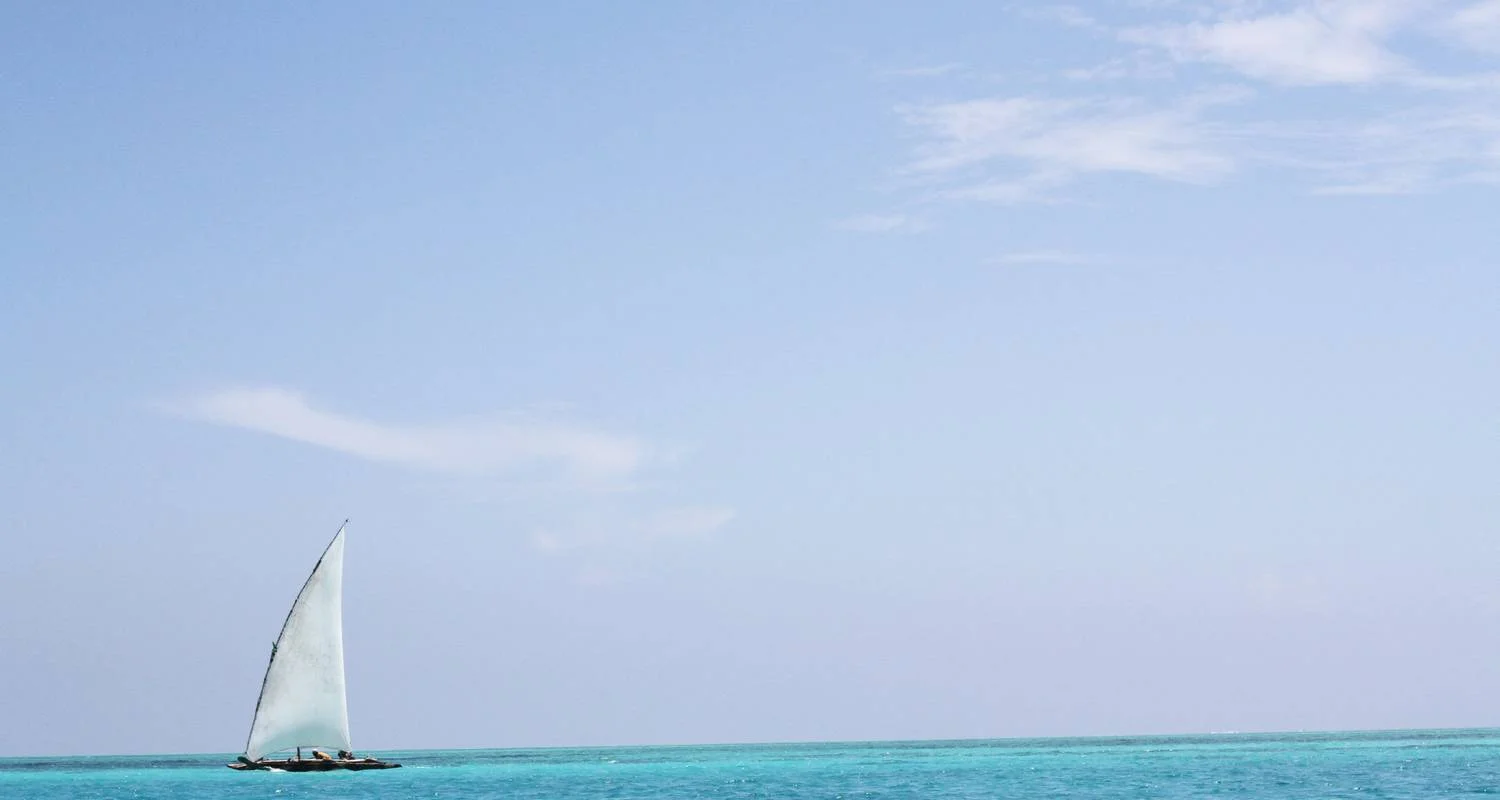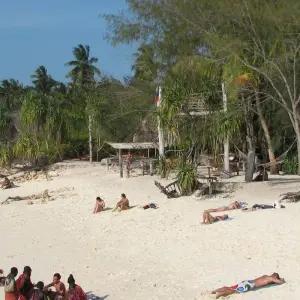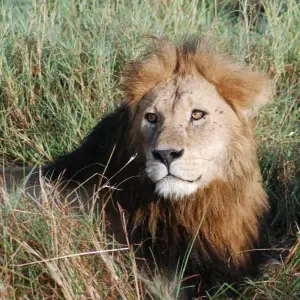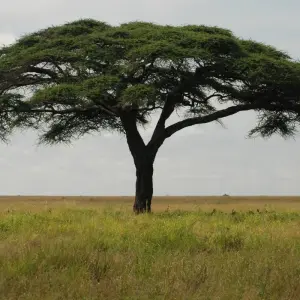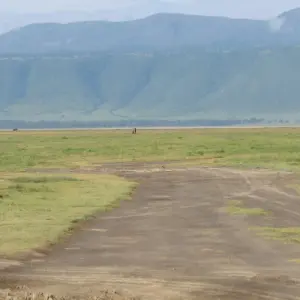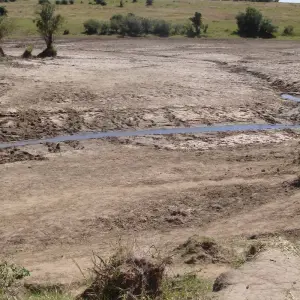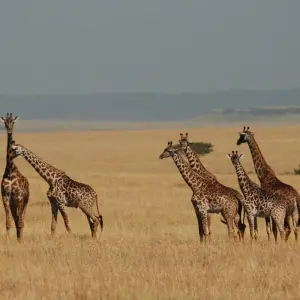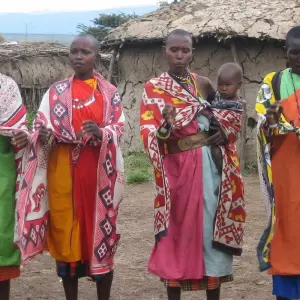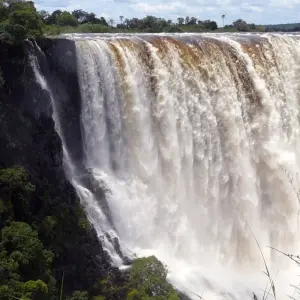BOOKING TERMS AND CONDITIONS
1. DEFINITIONS & PARTIES
a) In these Booking Conditions, the “Company” shall mean Africa Travel Co. Ltd. (Reg. Number: Z-47841).
b) The “Client” is the person or persons listed on the Booking Form.
c) A “trip” is any tour, trip, safari, expedition or combination of sections that has its own Trip Name and Trip
Code as reflected in both the brochure and on the website.
d) “Force Majeure” means any situation or event that is beyond the Company's control. This could be war,
riot, civil strife, terrorist activity, and industrial disputes, natural or industrial disasters, fire, adverse weather
conditions or Acts of God. It could also include governmental obstacles and changes to local transport
operators schedules (like ferry companies.)
2. CONTRACT
a) No contract shall exist between the Company and the Client, until the Company:
receives a signed Booking Form
receives a non-refundable deposit or 25% (twenty five percent) of the Trip Price
receives a signed copy of the Booking Terms and Conditions
issues the Client, or their travel agent, a written confirmation
b) A contract is entered into between the Company and the Client. The person who signs the Booking
Form represents and warrants to the Company, that they are authorised to sign the form and accepts all
these conditions on behalf of themselves and each of their travelling companions including any minors
who may be accompanying them.
c) No persons, organisation or employee of the Company has any authority to vary these Booking
Conditions. Neither do they have any authority to alter any information printed in the brochure or on the
website.
d) The Company and its agents reserve the right to decline any booking. The Company also reserves the
right to cancel any booking at its discretion in the event the Company believes the Client to be unsuited
to the trip booked.
e) Should any of these Terms and Conditions be held to be invalid, unlawful or unenforceable, such Terms
and Conditions will be severable from the remaining Terms and Conditions, which will continue to be
valid and enforceable. If any Term or Condition held to be invalid is capable of amendment to render it
valid, the parties agree to negotiate an amendment to remove the invalidity.
f) This contract (including its validity, existence and implementation, the interpretation and application of
its provisions, the respective rights and obligations of the parties in terms of and arising out of the
conclusion, breach and termination of the provisions of this agreement), shall be interpreted and
governed in all respects by the laws of England.
3. PAYMENTS
a) A non-refundable deposit of 25% (twenty five percent) of the Trip Price is required from each Client when
submitting the Booking Form to confirm the booking. This deposit will only be refunded if the Client
cannot be accommodated.
b) The balance of the Trip Price due by the Client to the Company shall be payable not less than 42 (forty
two) days prior to the date of a trip’s departure.
c) If the full amount is not received in the due time, the Company reserves the right to treat the booking as
a cancellation and the Client will be subject to the Cancellation Fees detailed below.
d) Payment made to an agent does not guarantee the booking, should that agent default in payment to
The Company.
e) The Local Payment (where applicable) must be paid is US$ (United States Dollars) cash to the Trip Leader
at the Pre-Departure Meeting, usually the night before the trip’s departure. This payment forms a part of
the overall trip price and failure to do so will constitute a breach of contract by the Client and the Client
will not be allowed to join the trip.
4. CANCELLATIONS
a) Any cancellations made by the Client must be in writing to the Company. The date on which the
correspondence is received by the Company will determine the Cancellation Fees.
b) Fees applicable in the event of a cancellation will be as follows:
Days Prior to Departure.........% of Trip Price
More than 42 days............25 %
42 to 28 days.......................35 %
27 to 14 days.......................50 %
13 to 7 days.........................75 %
Less than 7days.............. 100 %
c) Should the Client fail to join a trip, or join it after departure or leave it prior to its completion, no refund will
be made whatsoever, including the Local Payment portion that is not used.
d) The Company reserves the right to cancel any trip for any reason more than 42 (forty two) days prior to
the departure date. In this case the Client will be refunded any money they have paid to the Company
and that will be the extent of the Company’s liability.
e) The Company reserves the right to cancel any trip for reasons of Force Majeure less than 42 (forty two)
days prior to the departure date. In this case the Client will be refunded any money they have paid to
the Company, less reasonable expenses the Company has incurred, and that will be the extent of the
Company’s liability.
Some of our trips require a minimum number of Clients in order for it to run. If this number is not reached,
we reserve the right to cancel the trip. The Company will endeavour to cancel this trip more than 42
(forty two) days prior to the departure date unless it is necessitated by the late cancellation of other
passengers on the trip, in which case it will be cancelled less than 42 (forty two) days prior to the
departure date. In each case, the Client will be refunded any money they have paid to the Company
and that will be the extent of the Company’s liability.
g) Should the Client fail to pay the balance of the Trip Price in the due time, the Company will cancel the
booking and no monies already paid to the Company will be refunded.
h) The Cancellation Fees detailed above are only in relation to the Trip Price and do not include any extra
services booked like Airport Transfers and Accommodation. These cancellation fees may be as high as
100% (one hundred percent) and the Client is still liable for their payment.
5. TRANSFERS AND AMENDMENTS
a) If the Client wants to transfer from one trip to another, the Company must be informed in writing. The
Client must complete and sign a new Booking Form and, if necessary, provide an additional deposit (if
more than 42 (forty two) days prior to the trip’s departure) or balance of Trip Price (if less than 42 (forty
two) days prior to the trip’s departure.) The date on which the correspondence is received by The
Company will determine the transfer charge.
b) Charges applicable in the event of a transfer will be as follows:
Days Prior to Departure........% of Trip Price
More than 42 days..............0 %
42 to 28 days.......................35 %
27 to 14 days.......................50 %
13 to 7 days.........................75 %
Less than 7days.............. 100 %
c) Any non-recoverable expenses are not included in the Transfer Fee and the Client will still be liable for
these.
d) The Client cannot transfer their trip to another person.
6. PRICES
a) The Company reserves the right to change their rates at any time prior to the contract being entered
into. In the event that these rates are altered, the Client will be advised at the time of booking.
b) The Company endeavours not to increase the cost of the trip once the contract has been entered into.
However, the cost to run a trip is calculated up to 18 (eighteen) months in advance and increases in
running the trip like, but not exclusively, transportation costs, accommodation costs and fluctuations in
the exchange rates, may make an increase unavoidable.
c) Should a surcharge be payable, the Company will immediately notify the Client of such.
d) The Company will not add a surcharge to a trip less than 28 (twenty eight) days prior to a trip’s
departure.
e) The Company will not impose a surcharge of more than 20% (twenty percent) of the original Trip Price.
f) Should a surcharge be payable, the Client must pay said surcharge prior to joining the trip.
g) The Client must pay the Local Payment contribution for the Discounted Trip.
h) Discounts offered are on the trip price of the trip only, and only one discount may be applied to each
trip. This applies to promotions and specials offered by the Company or any of its representatives.
i) Different sales prices are calculated in various currencies in advance of printing the sales brochure. Due
to fluctuations, prices in various currencies may vary as a result. The Company, and it’s representatives
will not be held liable to refund based on these variances, and the Client will be responsible for settling
all outstanding amounts owed in the currency based on their booking origin, or that of their agent.
7. ITINERARIES
a) The documentation provided by the Company (e.g. Trip Dossiers, Brochures, Website, etc.) is set out in
good faith as statements of intent only and changes to the itinerary, vehicle and equipment use, etc.
may be made where deemed necessary by the Company.
b) Any additional expenses, incurred through deviations to the itineraries because of Force Majeure or
reasons considered advisable by the Company will be for the Client’s account.
c) The Client accepts that Force Majeure may preclude the Company from providing services or following
the itinerary as detailed in the Trip Dossier.
d) The Company will not refund any monies paid for unused services which are included in the Trip Price.
e) As of January 2014 the Trip includes an arrival airport transfer and one pre-night accommodation per
person in a dorm room, or similar where dorms are not available. Should the Company not receive the arrival details in order to book the transfer and dorm accommodation, no refund whatsoever will be
made for this service.
8. CHANGES
a) The Company reserves the right to make changes to the trip any time prior to the contract being
entered into. In the event that any aspect of the trip is altered, the Client will be advised at the time of
their booking.
b) The Company endeavours not to make changes to the trip once the contract has been entered into.
However, because of the unpredictability of travel in many of the areas visited, changes prior to a trip’s
departure may be unavoidable. Where this alteration is significant (i.e. where a major deviation to the
itinerary is made) the Company undertakes to inform the Client as soon as possible.
c) Due to the nature of the areas we travel through significant changes can and do occur after a trip’s
departure, over which the Company has no control. The Company will make alternative arrangements
like changing the method of transport and/or the itinerary if Force Majeure, breakdowns, accidents,
sickness, etc. necessitate such a change. The Company cannot be held responsible for compensation
or additional expenses incurred due to any such change.
9. COMPLAINTS
a) If the Client has a complaint about the trip, such complaint must immediately be raised with the Trip
Leader or the Company’s Head Office so that, if possible, a solution can be found.
b) Failing resolution, the Client must make any complaint within 28 (twenty eight) days of the trip’s finish date.
c) This complaint must be made in writing.
d) The Company will not be held liable for the loss of enjoyment due to unfulfilled expectations of the Trip
due to the nature of adventure group travel; each trip is unique and reliant on client interaction and
participation.
10. COMPANY RESPONSIBILITY
a) All information in documentation provided by the Company (e.g. Trip Dossiers, Brochure, Website, etc.)
has been set out with reasonable care and is published in good faith. Where the Company is acting as
an agent on the Client’s behalf (e.g. when booking facilities/services used before, during the course of
or after the trip), it does so on the explicit condition that it cannot be held responsible for any loss,
damage, injury, additional expenses or breaches of contract resulting directly or indirectly from the
actions or omissions of the suppliers or independent parties with whom these arrangements have been
made.
b) The Company cannot be held responsible:
If there has been no fault on the part of the Company or its suppliers and the cause was the Client’s
fault or the fault of someone not associated with the trip whose actions were not foreseeable.
If the cause was the fault of unforeseeable circumstances beyond the Company’s or its suppliers
control, the results of which were unavoidable even though every caution was taken.
If the cause was the fault of the Client having taken part in any activity or optional activity which
does not form part of the original trip arrangements, even though they may be supervised, arranged
or recommended by the Company or its representatives (e.g. bungy jumping, rafting, ballooning or
other such activities of a risky nature.)
Where a disease or illness is contracted during or after the trip. Should the Client need to leave the
trip because of such, no refund whatsoever will be forthcoming and the Client will be responsible for
all expenses incurred for the treatment of their illness and as a result of having to leave the trip.
For any information or advice provided by a travel agent unless such information has been provided
to the travel agent by the Company. In the case of such information and advice not having been
provided by the Company, the responsibility must lie with the travel agent.
For a travel agent not providing or providing incorrect advice, information or documents, which the
Company has given to the travel agent, or in the case of negligence by the travel agent.
Where the Company has provided advice and information on travel documents, visas, climate,
spending money, clothing, equipment, etc. This advice and information has been set out with
reasonable care and is published in good faith, but without responsibility on the part of the
Company.
For any advice or information provided by the Company’s crew. This advice and information has
been given in good faith, but without responsibility on the part of the Company.
For any Client’s luggage or personal effects
c) The Company, its employees and agents cannot be held responsible for expenses, inconvenience, loss
of enjoyment or anything else caused by the Client’s non-compliance with any of responsibilities listed
below.
11. CLIENT RESPONSIBILITY
a) The nature of the Company’s trips may involve an element of personal risk and potential hazard not
normally associated with holiday tours. The Client must accept these risks and hazards.
b) The Client must accept that safety standards of suppliers of accommodation, local transport and other
operators in most of the countries visited will not be of the same standard as in their home country.
c) The Client must make themselves aware through the various government agency warnings and
advisories (e.g. British Foreign & Commonwealth Office, US Department of State) with regard to the
safety of countries and areas through which they’ll be travelling and to make their own decisions
accordingly.
d) The Client must arrange suitable adventure travel insurance with benefits that cover personal accident,
medical expenses including repatriation and loss and damage to personal effects. It is suggested
insurance is also taken out to cover any expenses related to the cancellation or curtailment of any trip.
Should the Client not have adequate travel insurance, they may not be allowed to join the trip.
e) The Client is to get professional medical advice before travelling and to take all necessary health
precautions and preventative measures.
f) The Client is responsible for informing the Company, at the time of booking, of any known disabilities or
medical conditions, or, if not known at the time of booking, as soon they become known. Any Client
found to have failed to disclose this information, may be directed to leave the trip. No refund
whatsoever will be forthcoming and the Client will be responsible for all expenses incurred as a result of
having to leave the trip.
g) The Company’s crew have authority to make difficult decisions. Should the Client present a medical
condition, the crew may insist they seek medical advice. If the Client refuses to act upon this advice,
thereby putting the other members of the trip in danger or at risk, the Client may be asked to leave the
trip. This includes physical, mental and behavioural conditions. No refund whatsoever will be forthcoming
and the Client will be responsible for all expenses incurred as a result of having to leave the trip.
h) The Client must check the documents issued for trips and services booked through the Company and
should there be any mistakes, immediately notify the Company of such.
i) The Client must adhere to the trip joining instructions given to them.
j) The Client must comply with all current passport, visa and health requirements needed for each of the
countries the trips travel through.
k) The Client must abide by the laws and customs of the countries visited. The Company has absolute
discretion to direct the Client to leave the trip if they disobey such laws and customs. No refund
whatsoever will be forthcoming and the Client will be responsible for all expenses incurred as a result of
having to leave the trip.
l) The Client must not put the welfare of the group, individual member, members or themselves in
jeopardy. The Company has absolute discretion to direct the Client to leave the trip if this is found to be
the case. No refund whatsoever will be forthcoming and the Client will be responsible for all expenses
incurred as a result of having to leave the trip.
m) The Client must reimburse the Company for any expenses incurred on behalf of the Client.
n) The Client must be aware that the Company’s crew, agents and representatives may take photographs
and film footage throughout the trip. The Company reserves the right to use such media for marketing
purposes without obtaining consent from the Client. The Company also reserves the right to use any
Client comments, either verbal or written, for marketing purposes without obtaining consent from the
Client.
I confirm that I abide by the aforementioned and agree to the Terms and Conditions therein contained. I
record that I am joining a trip or making a booking at my own risk and waive any claims that I might have in
regard to injury, loss or death which might occur due to any causes whatsoever. I refer in particular to any
minor child or children who may be accompanying me and confirm specifically that this indemnity as
signed applies to such child/children. I further bind my dependents, heirs, executors, administrators and
assigns to the Terms and Conditions of this agreement, and indemnify and hold blameless Africa Travel Co.
Ltd, its members, associates, employees, representatives, organisers, helpers and agents from all liability for
any or all claims whatsoever and howsoever arising and without limitation (including consequential claims)
arising from any delay, loss or damage to property or injury or illness or death arising from any cause related
to or occurring during my booking or activities or trips with the Company.

